Catalog
Search
134 products
View:
- Selected: 1Areas of use
- Selected: 0Item names
- Selected: 0Manufacturer
- Selected: 0Made in
- Selected: 0Additional
View:
134 products
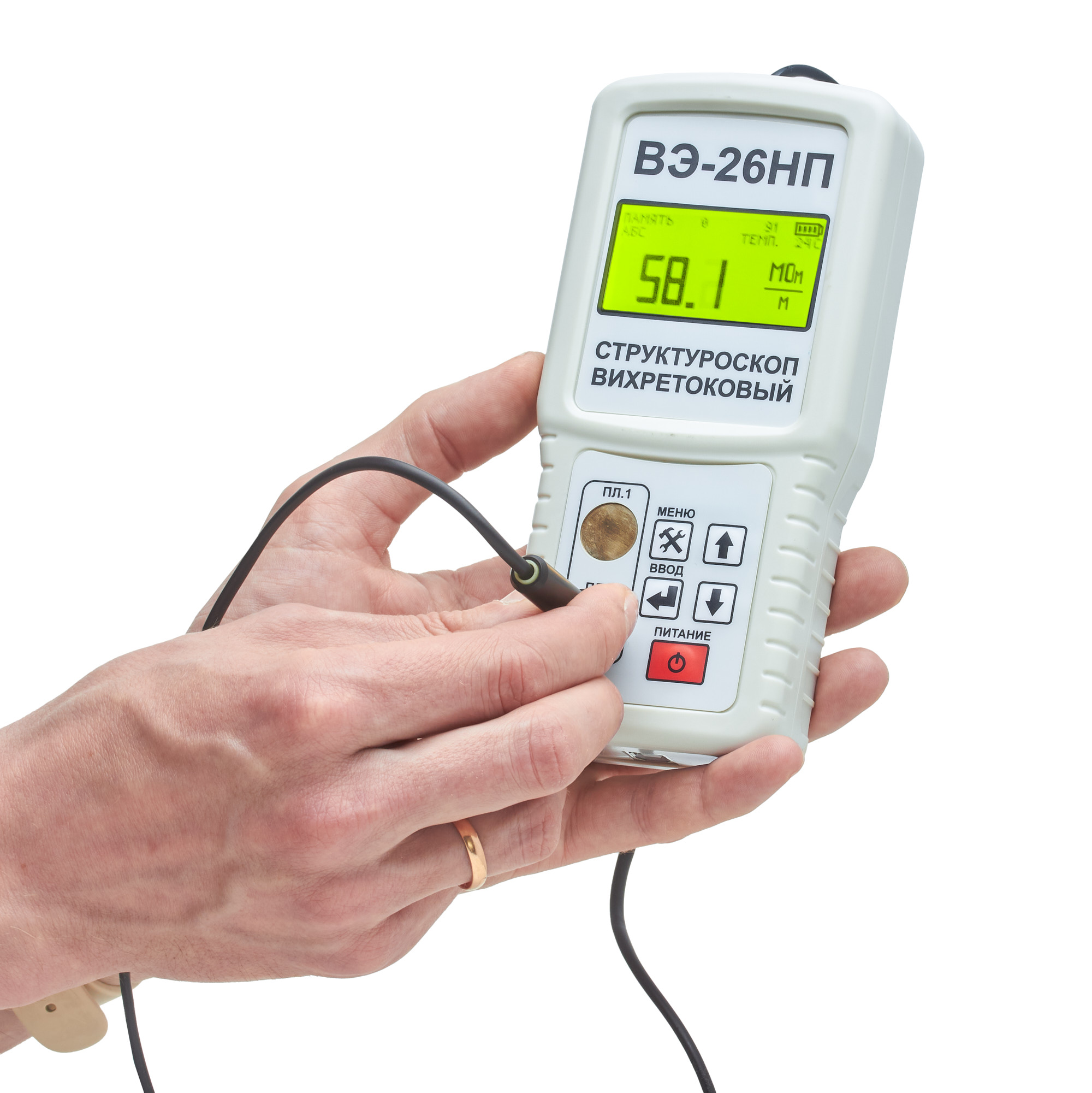
VE-26NP Eddy current structuroscope
from
195 000 ₽
Distinctive features:
The built-in thermometer allows you to take into account the influence of ambient temperature and improve the measurement accuracy. The built-in memory stores 4096 electrical conductivity measurement results for subsequent transfer to a PC.
Specifications:
Measuring range of the absolute value of specific electrical conductivity, MSm/m from 5 to 60
Measuring range of increments of electrical conductivity, MS/m from -9.99 to +9.99 Limit of permissible basic relative measurement error, % no more than 2 Permissible gap between the transducer and the surface of the controlled product, mm, no more than 0.25 Digital display of measurement results Power supply from RRZ type battery, V 9 Power consumption, mW, no more than 40 Operating temperature range, °C 5...40 Dimensions, mm 57*84*30 Weight, g 270±20
Measuring range of increments of electrical conductivity, MS/m from -9.99 to +9.99 Limit of permissible basic relative measurement error, % no more than 2 Permissible gap between the transducer and the surface of the controlled product, mm, no more than 0.25 Digital display of measurement results Power supply from RRZ type battery, V 9 Power consumption, mW, no more than 40 Operating temperature range, °C 5...40 Dimensions, mm 57*84*30 Weight, g 270±20
RII MNPO SPEKTR
Moscow
Produced in: Moscow
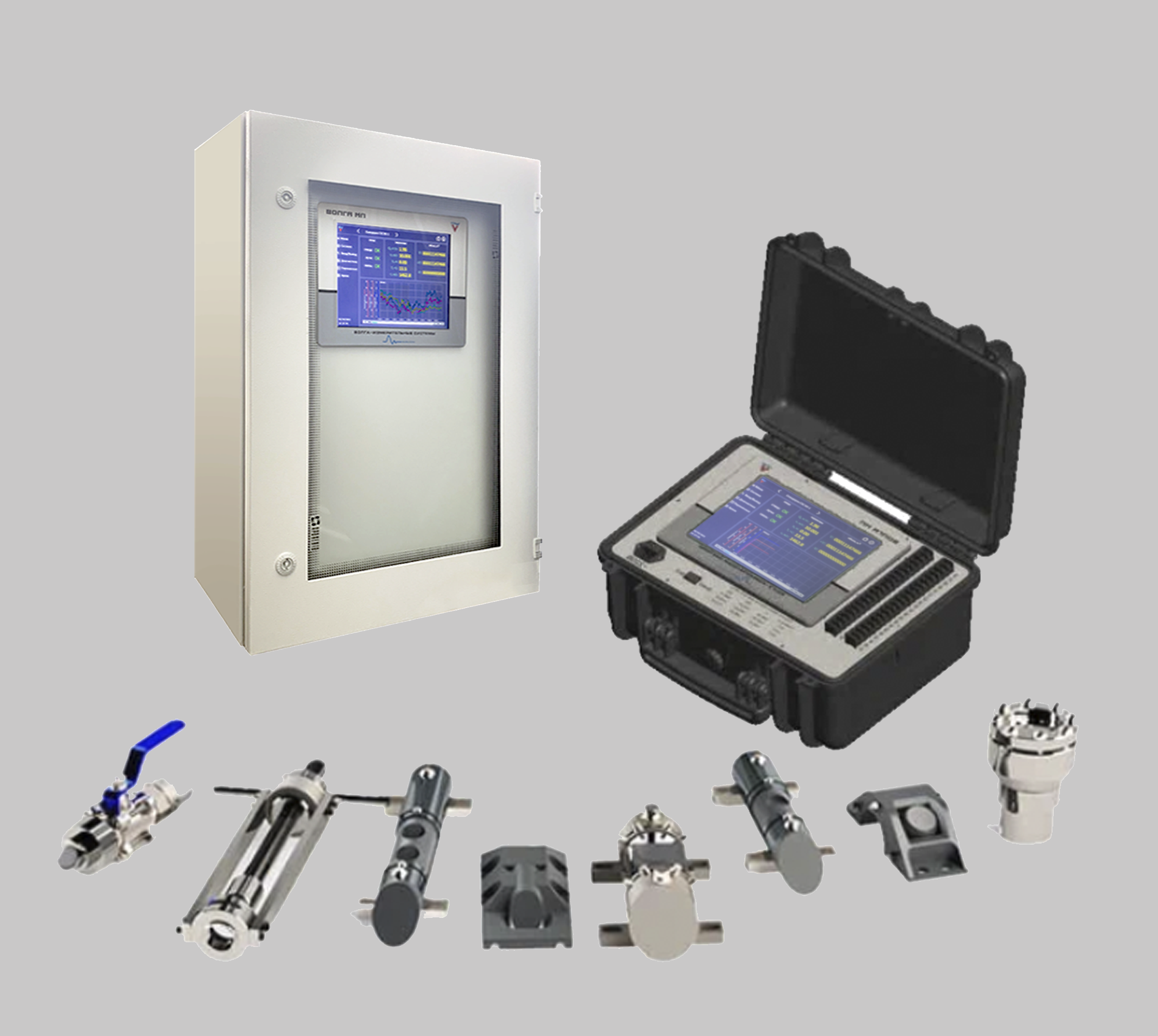
Acoustic ultrasonic flow meter Volga ML
from
400 000 ₽
The flow meter is fully developed by Russian specialists in the field of acoustics, hydraulics and electronics, and is designed to measure the volumetric flow rate and volume of water in pipelines, mainly medium and large, under pressure, non-pressure and combined (pressure-free) flow modes. The flowmeter is based on ultrasonic "time-pulse" multipath technology for measuring the flow velocity in the measuring range. In addition, depth sensors (primary transducers) - hydrostatic, radar contactless, ultrasonic underwater or ultrasonic contactless - are used to measure the flow in water ducts with a combined or non-pressure flow mode. In the presence of deposits affecting the shape and area of the live section of the flow, sediment level sensors are used.
Secondary converter
It is available in both stationary (~220 V) and portable versions with autonomous power supply.
Primary converters
Inset and overhead primary converters from the inside allow you to place the measurement gate on any water pipe made of any material, taking into account design features.
Pipe sizes
Du, mm: 200, 250, 300, 350, 400, 500, 600, 700, 800, 900, 1000, 1200, 1400, 1600, up to 15000 mm
The Volga ML acoustic ultrasonic flowmeter is registered as a type of measuring instrument in the Federal Information Fund for Ensuring the Uniformity of Measurements for No. 78414-20 (MP 2550-0361-2019).
The Volga ML acoustic ultrasonic flow meter has been recognized as the winner in the nomination Best Technology of the International Environmental Award EWA Award 2020.
ICF VOLGA
Moscow
Produced in: Moscow
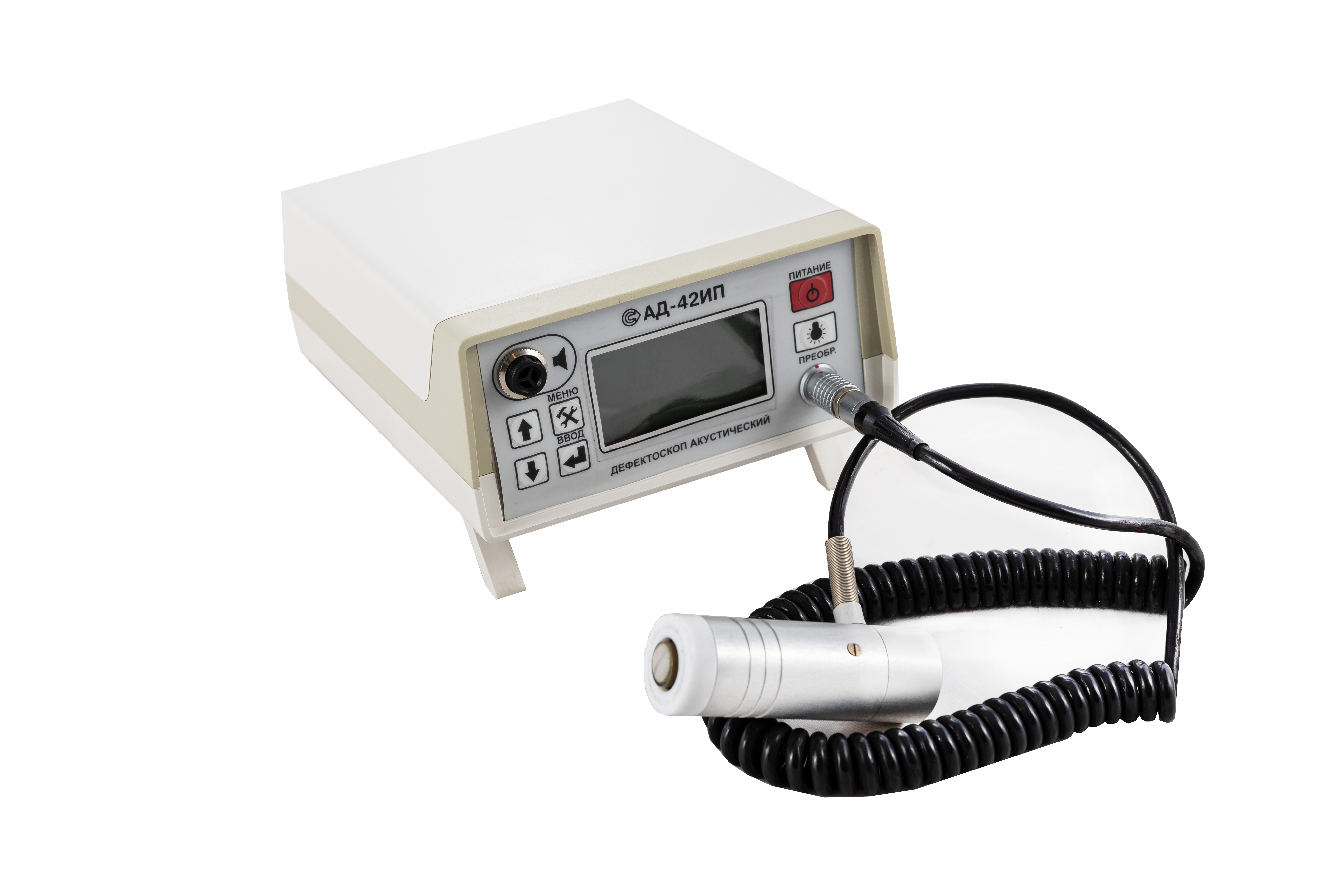
AD-42IP Acoustic Flaw Detector
from
442 500 ₽
It is especially effective for use in products made of composite materials (including with honeycomb filler).
Distinctive features:
The AD-42 IP is a compact acoustic system sensitive to changes in mechanical impedance caused by product defects. The indication of the device indicates that there are voids, non-adhesives, delaminations or changes in the structure of composite materials (including with honeycomb filler and laminated plastics) under the sensor.
The device is used to monitor various materials and their combinations.
The energy consumption of the unit is low because the converter is switched on when the sensor is placed on the monitored product.
Being light enough, the device allows you to perform monitoring in hard-to-reach places or in confined spaces.
The results of the control can be stored in the built-in non-volatile memory and transferred to a PC.
Converters
Options: - 3 types of converters for various tasks
Emitters: - 1 or 2 on each converter
Switching-on: - The converters are switched on when they are placed on a controlled object.
Technical characteristics:
Weight, kg: 0.73
Dimensions, mm: 210x150x70
Power supply: 4 AA batteries
Work without recharging the battery, h: 8
Battery discharge visual indication
The defect alarm is visual on the converter and audible on the instrument panel (or) in headphones.
RII MNPO SPEKTR
Moscow
Produced in: Moscow
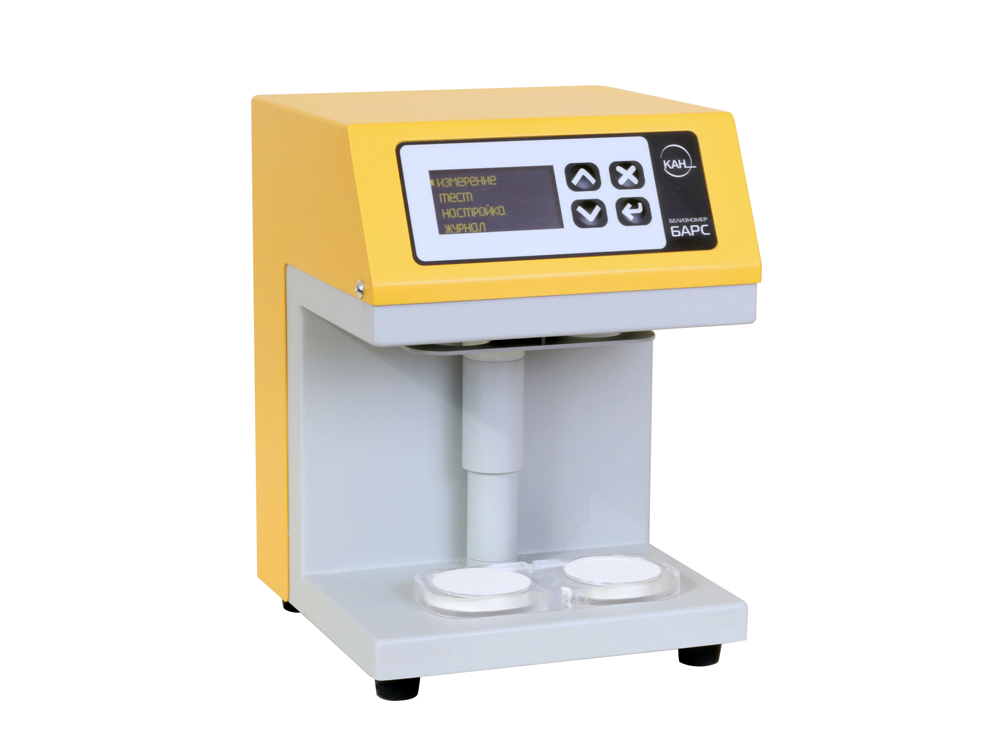
Whiteness meter BARS
1 supp.
The principle of operation is based on measuring the zonal reflection coefficient of a compacted-smoothed flour surface using a built-in standard.
The laboratory white meter BARS is approved as a type of measuring instruments and is registered in the State Register of Measuring Instruments under No. 78409-20. All manufactured devices undergo primary verification and have the appropriate certificate.
Due to the two-channel design of the device (the presence of two photometric units and a cuvette with two cells), parallel measurements of the whiteness of one flour sample are carried out simultaneously, the average value is calculated automatically, which significantly reduces the time of analysis.
The sealing of the flour sample with a fixed force and pressing against the optical windows ensures the same measurement conditions and eliminates the influence of a subjective factor on the result.
The automatic adjustment system based on the built-in standard allows to ensure long-term stability of the device without the need for manual adjustment. During operation, the standard is set to the working position by an additional drive. Mechanical damage or loss of the standard is excluded.
The output to the operating mode is no more than 30 seconds. The determination of whiteness is carried out in 15 seconds.
To determine the whiteness of flour, the operator needs to fill 2 compartments of the cuvette with the test sample of flour, install the cuvette in the device and start the measurement process.
All the results of the whiteness definitions are stored in the archive. The operator has the opportunity to view the electronic measurement log.
GK EKAN
Saint Petersburg
Produced in: Saint Petersburg
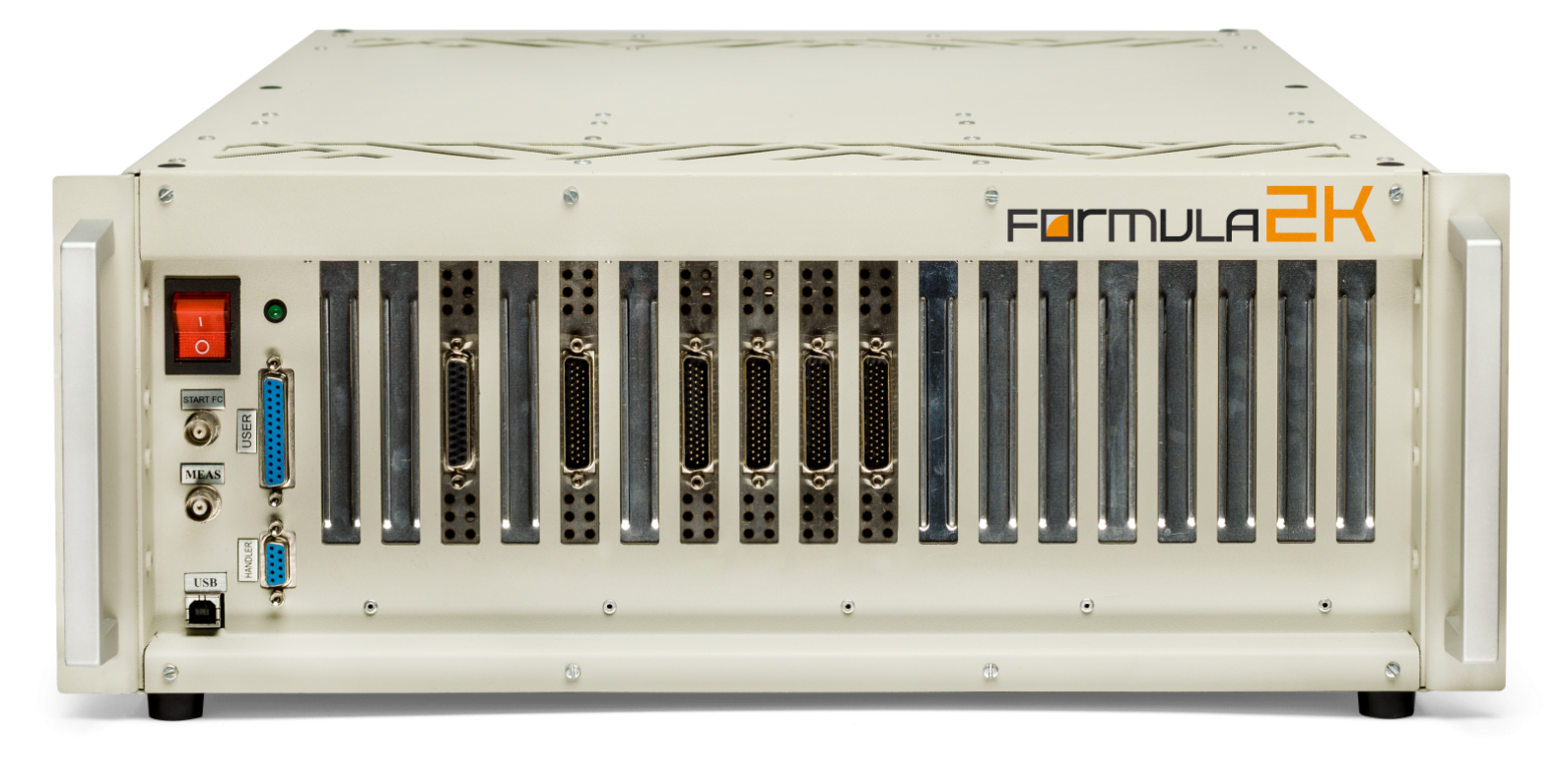
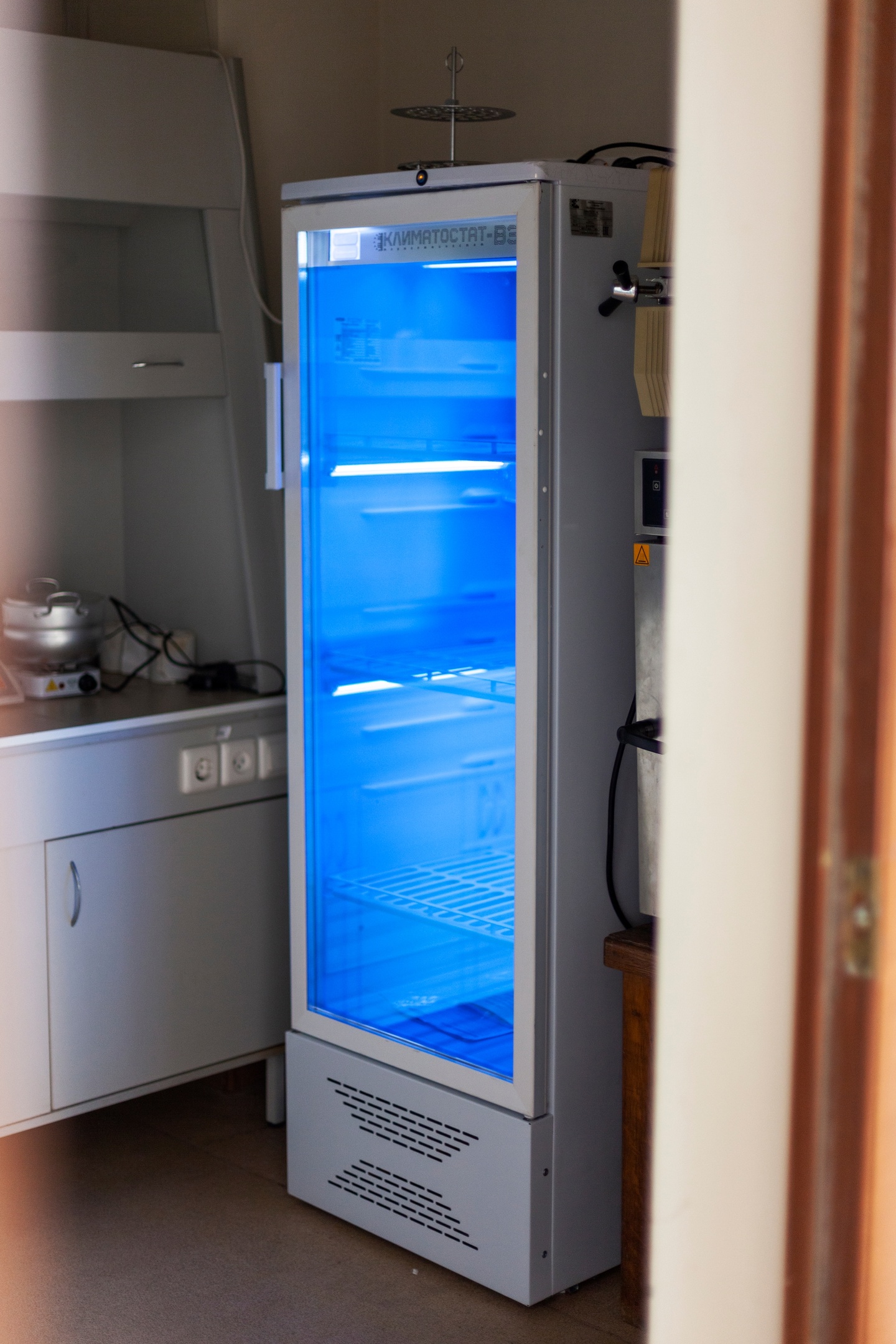
Climatostat V3 (TU 26.51.-70-002-63790925-2021)
from
460 000 ₽
1 supp.
Climatostat V3 (TU 26.51.-70-002-63790925-2021)- it has a new unique control unit UB-04T with a touch screen. This climatostat is universal, it combines the advantages of climatostats B2 and P2, and, accordingly, can perform the functions of one and the other. It is intended for performing works on biotesting the toxicity of aquatic environments on daphnia and ceriodaphnia crustaceans, as well as microalgae (scenedesmus, etc.) in controlled environmental conditions. In the climatostat, it is possible to install exposure devices of the type (UER or similar) and to carry out the exposure of samples under conditions of rotation of samples with test organisms in a plane located at an angle to the horizontal. This ensures the intensification of gas exchange of liquid samples with the external environment. A slow rotation ensures complete uniformity of conditions (temperature, lighting, gas exchange) in all samples, including control, and as a result - high reproducibility of the biotest conditions and reproducibility of the test results.
The climatostat has an on-board network for connecting additional sample exposure devices, 5 (five) preset modes and 8 (eight) user modes for free programming of the climatostating parameters by the operator. It is intended for carrying out biotesting (according to the methods of Zhmur N.S., "Aquaross" 2001, 2007), Grigorieva Y.S. (SFU)., Terekhova V.A. (MSU, LATAP), hazard assessment of nanomaterials according to the methods of Morgalev Yu.N. (TomSU) and others.
Used with test objects:
Crustaceans Daphnia Magna (Daphnia magna Straus);
Crustaceans Ceriodaphnia affinis (Ceriodaphnia affinis);
Crustaceans of salty reservoirs Artemia Salina (Artemia salina L);
Algae Scenedesmus (Scenedesmus quadricauda).
Algae chlorella (Chlorella vulgaris Beijer), etc.
Additional features of the controller (UB-04T):
- setting the contrast of information display
- sound notification of an open door
- audio notification of the end of the biotest
- graphical intuitive parameter setting scales
- Fully Russian-language menu and Russian-language design of all text information of the interface
- 3 (three) preset modes with the exact name and a brief description of the techniques (can be increased or decreased at the request of the Customer)
- quick correction of backlight brightness in preset modes (two touches)
- fast temperature correction of temperature control in preset modes (two touches)
- 8 user modes (the number of modes can be increased or decreased at the request of the customer when ordering)
- graphical intuitive scales for adjusting the brightness of lumostating, temperature of thermostating, automatic adjustment of the photoperiod (with one touch)
- built-in countdown timers for setting the exposure time in the biotest (up to 180 days with a minimum discreteness of 1 min)
- notification of the power failure of the device during the test
- error notification
- the ability to update the controller firmware directly by the user at the place of operation
- quick reset to factory presets
Evropolitest
Ivanteevka
Produced in: Moscow region
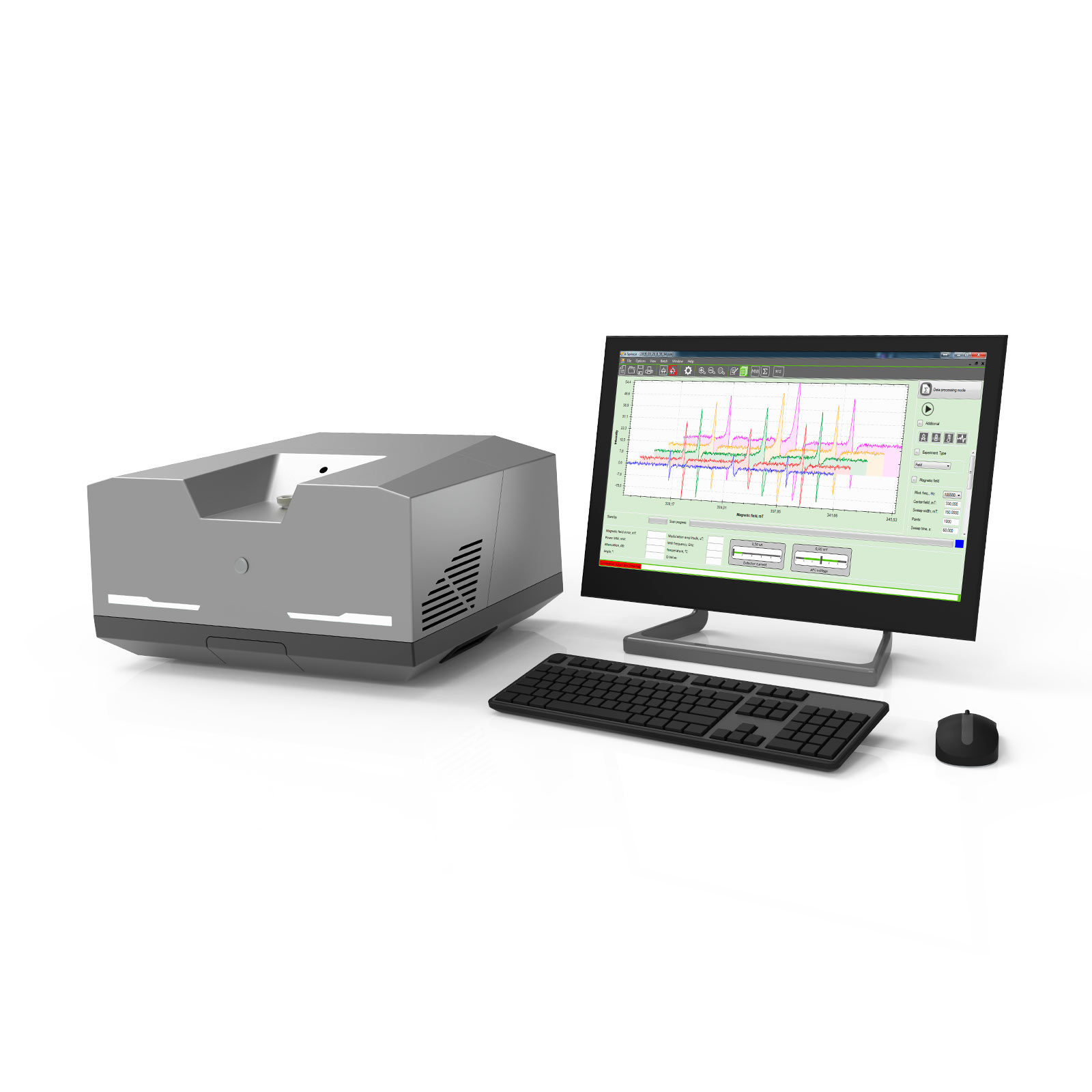
EPR spectrometer CMS8400 NEO
The CMS8400 NEO is a compact electron paramagnetic resonance spectrometer designed for routine research in physics, chemistry, biology and related scientific fields for direct detection of free radicals and paramagnetic materials. The CMS8400 NEO can be used in both laboratory and industrial settings in the mode of on-line measurements, embedded in technological processes, thus providing control of parameters and reactions in the production process.
Additional accessories and adapted software can make the spectrometer an analytical tool and allow to implement new complex applications in medicine, petrochemistry, brewing, sanitary and hygienic control, as well as in other industries.
ADVIN Smart Faktory
Minsk
Produced in: Belarus
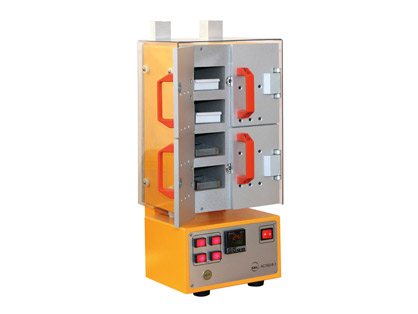
Measuring air-thermal installation ASESH-8-1
1 supp.
A thermogravimetric (air-thermal) method for determining the mass fraction of moisture is implemented, based on measuring the mass of the sample of the analyzed substance before and after drying, followed by calculating the values of the mass fraction of moisture.
Air-thermal measuring installations ASESH-8 are registered in the State Register of Measuring Instruments under No.58526-14, have a certificate of approval of the type of measuring instruments RU.C.31.005 And No. 56847. The installations undergo initial verification and have the appropriate certificate.
GENERAL CHARACTERISTICS
1. Convenient access to the cells of the drying chamber
On the front side of the cabinet there are four doors for access to the cells.
2. The possibility of simultaneous determination of the humidity of 8 samples
The drying chamber of the air-heat installation consists of 8 independent cells with a total capacity of 16 bucs.
3. Built-in timer
The ASESH-8-1 installation has 4 timers, by means of which the end of the drying process is monitored in each section with the output of an audible signal and a light indication.
4. Natural ventilation
The absence of rotating elements ensures absolute noiselessness of operation and a long service life.
SCOPE OF APPLICATION:
1. Crop production, agriculture and forestry.
2. Products of meat, dairy, fish, flour-milling, feed and microbiological industries.
3. Food industry products.
4. Cellulose, paper, cardboard and products made from them.
5. Medicines, chemical and pharmaceutical products and medical products.
6. Building materials.
7. Products of the logging and sawmilling and woodworking industry.
8. Soils, пground, mineral fertilizers.
GK EKAN
Saint Petersburg
Produced in: Saint Petersburg
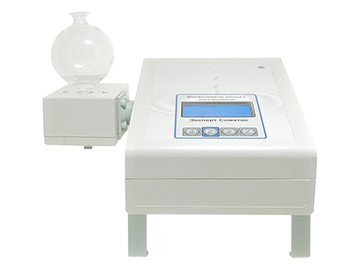
Electronic milk viscometer "Expert Somatos - 01"
from
69 000 ₽
1 supp.
Electronic milk viscometer (analyzer of the number of somatic cells in milk) Expert Somatos is a novelty of 2020! Modern, designed taking into account all the wishes of our customers over the past 12 years! The most accurate and most reliable! It fully complies with GOST 23453-2014 (Raw milk. Methods for the determination of somatic cells. Section 6: Method for determining the number of somatic cells using a viscometer) as amended on 01.01.2016, including the length and diameter of the capillary!
The analyzer is included in the state register of the Russian Federation as a measuring instrument!
Exclusive benefits:
• version with one or two flasks, which allows up to 60 measurements per hour
• optionally equipped with an integrated or external printer
• thanks to the new verification method developed from scratch, it can be trusted in any standardization and metrology center
As a rule, it is used:
• Dairy farms — for the timely prevention and treatment of mastitis in cows, which ensures stable supplies of high-grade milk (accordingly increases the cost of products).
• Veterinary laboratories, SBBS, points for receiving farm milk from the population to determine the grade and calculate the cost of raw milk.
• In the laboratories of milk processing enterprises to control incoming raw milk.
LABORATORIKA
Krasnoobsk
Produced in: Novosibirsk region
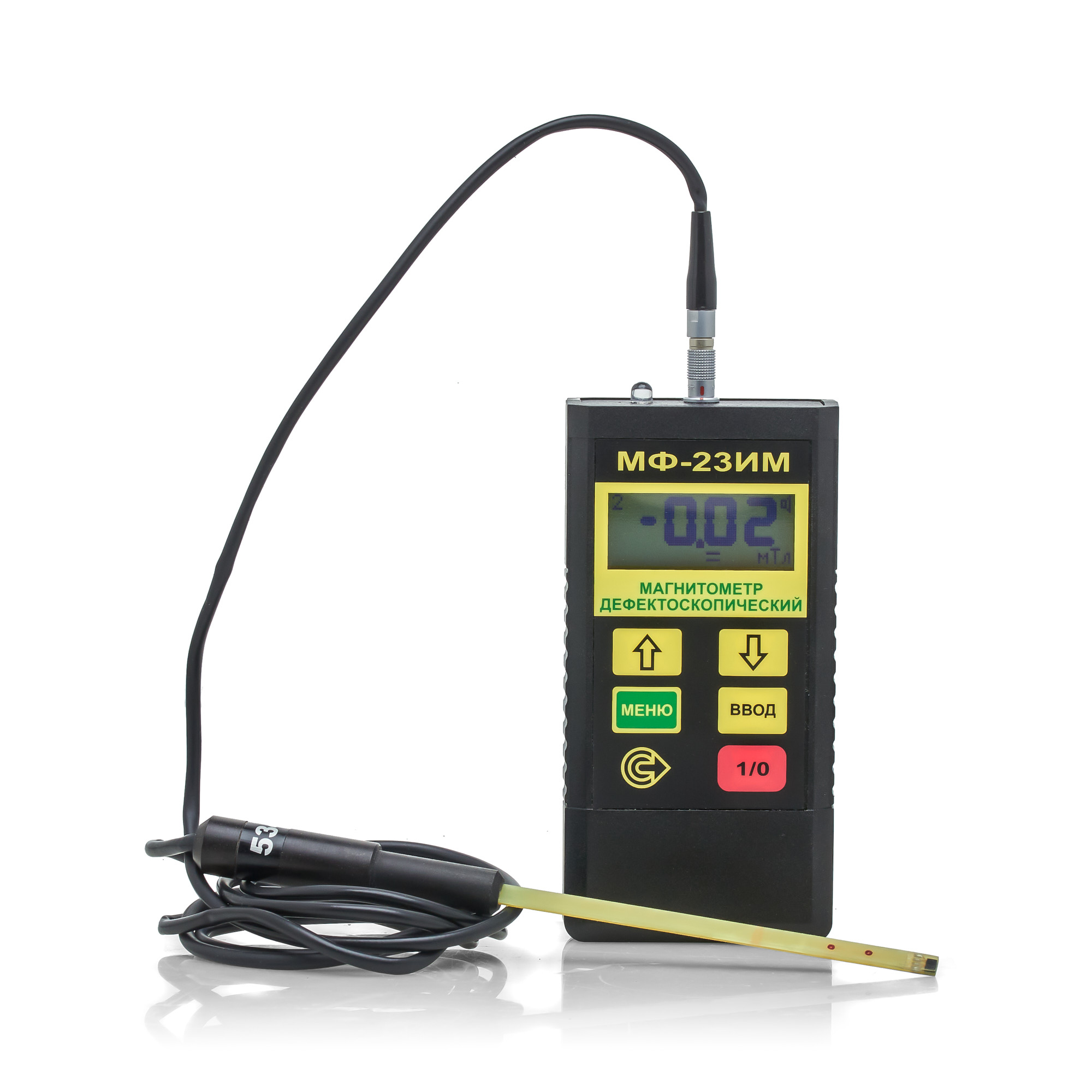
MF-23IM Flaw detection magnetometer
from
193 200 ₽
The MF-23IM flaw detection magnetometer allows you to determine the compliance of the ratio of the tangential and normal components of the magnetic field strength during magnetic particle testing using both the applied field method (AFM) and the remanent magnetization method (RMM) in accordance with the requirements of current regulatory documentation.
The MF-23IM flaw detection magnetometer meets the requirements in the field of non-destructive testing for the main industries: nuclear, energy, oil and gas complex, general and special engineering, railway transport, aerospace industry, elevator and crane facilities.
The flaw detection magnetometer is included in the State Register of Measuring Instruments (GRSI) under No. 20106-00. The magnetometer (milliteslameter) is also included in the register of measuring instruments, testing equipment and measurement methods used at JSC Russian Railways. The flaw detection magnetometer MF-23IM from the manufacturer is used to measure the parameters of constant, variable (industrial frequency) and pulsed magnetic fields when testing ferromagnetic products using the magnetic particle method, as well as to control the level of industrial interference. Specifications.
Magnetic field induction (strength) measurement range: - constant and variable (amplitude and average values) 0.5…1000 mT (4…8000 A/cm) - pulsed (amplitude value) 2…1000 mT (18…8000 A/cm) Indication of measurement results digital or digital + graphic Indicator liquid crystal display Power supply from 1 PP3 battery Current consumption, mA, no more than 15 Memory capacity for storing results 4080 Communication with a computer via infrared channel Dimensions of the electronic unit, mm, no more than 120x60x25 Weight of the electronic unit with battery, g 150
The minimum dimensions of the Hall transducer for the MF-23IM magnetometer make it possible to measure the induction and magnetic field strength in grooves, grooves, corner transitions, i.e. in those areas of the controlled product that are stress concentrators and the most dangerous from the point of view of crack formation; · Measurement of pulsed magnetizing field with pulse duration from 0.5 ms; · Small measurement error (see technical specifications table) · Compact size and low power consumption;
· The magnetometer has 2 modes for displaying measurement results – digital and graphic). The MF-23IM magnetometer in graphical display mode allows you to detect a demagnetizing pulse by displaying its shape and amplitude on a graphic display, as a result of which changes can be made to the magnetization circuit in a timely manner. · The software of the MF-23IM magnetometer allows you to flexibly configure not only the response thresholds, but also the time base, which allows you to tune out false indications caused by reverse emissions of the magnetic field or electromagnetic interference from operating power equipment (magnetizing devices or magnetic particle flaw detectors).
· Determination of the effective magnetization region, within which the tangential component of the magnetic field strength is sufficient for magnetic particle testing, and the ratio of the normal and tangential components of the magnetic field strength is less than or equal to 3. · Checking the mode of magnetization/demagnetization of test objects for compliance with the methodology/technological instructions for magnetic particle testing for a given object.
BASIC SET: Electronic unit Converter 1 Converter 2 Caliber PP3 battery CD with program Case Flaw detection magnetometer MF-23IM. Passport
The flaw detection magnetometer is included in the State Register of Measuring Instruments (GRSI) under No. 20106-00. The magnetometer (milliteslameter) is also included in the register of measuring instruments, testing equipment and measurement methods used at JSC Russian Railways. The flaw detection magnetometer MF-23IM from the manufacturer is used to measure the parameters of constant, variable (industrial frequency) and pulsed magnetic fields when testing ferromagnetic products using the magnetic particle method, as well as to control the level of industrial interference. Specifications.
Magnetic field induction (strength) measurement range: - constant and variable (amplitude and average values) 0.5…1000 mT (4…8000 A/cm) - pulsed (amplitude value) 2…1000 mT (18…8000 A/cm) Indication of measurement results digital or digital + graphic Indicator liquid crystal display Power supply from 1 PP3 battery Current consumption, mA, no more than 15 Memory capacity for storing results 4080 Communication with a computer via infrared channel Dimensions of the electronic unit, mm, no more than 120x60x25 Weight of the electronic unit with battery, g 150
The minimum dimensions of the Hall transducer for the MF-23IM magnetometer make it possible to measure the induction and magnetic field strength in grooves, grooves, corner transitions, i.e. in those areas of the controlled product that are stress concentrators and the most dangerous from the point of view of crack formation; · Measurement of pulsed magnetizing field with pulse duration from 0.5 ms; · Small measurement error (see technical specifications table) · Compact size and low power consumption;
· The magnetometer has 2 modes for displaying measurement results – digital and graphic). The MF-23IM magnetometer in graphical display mode allows you to detect a demagnetizing pulse by displaying its shape and amplitude on a graphic display, as a result of which changes can be made to the magnetization circuit in a timely manner. · The software of the MF-23IM magnetometer allows you to flexibly configure not only the response thresholds, but also the time base, which allows you to tune out false indications caused by reverse emissions of the magnetic field or electromagnetic interference from operating power equipment (magnetizing devices or magnetic particle flaw detectors).
· Determination of the effective magnetization region, within which the tangential component of the magnetic field strength is sufficient for magnetic particle testing, and the ratio of the normal and tangential components of the magnetic field strength is less than or equal to 3. · Checking the mode of magnetization/demagnetization of test objects for compliance with the methodology/technological instructions for magnetic particle testing for a given object.
BASIC SET: Electronic unit Converter 1 Converter 2 Caliber PP3 battery CD with program Case Flaw detection magnetometer MF-23IM. Passport
RII MNPO SPEKTR
Moscow
Produced in: Moscow
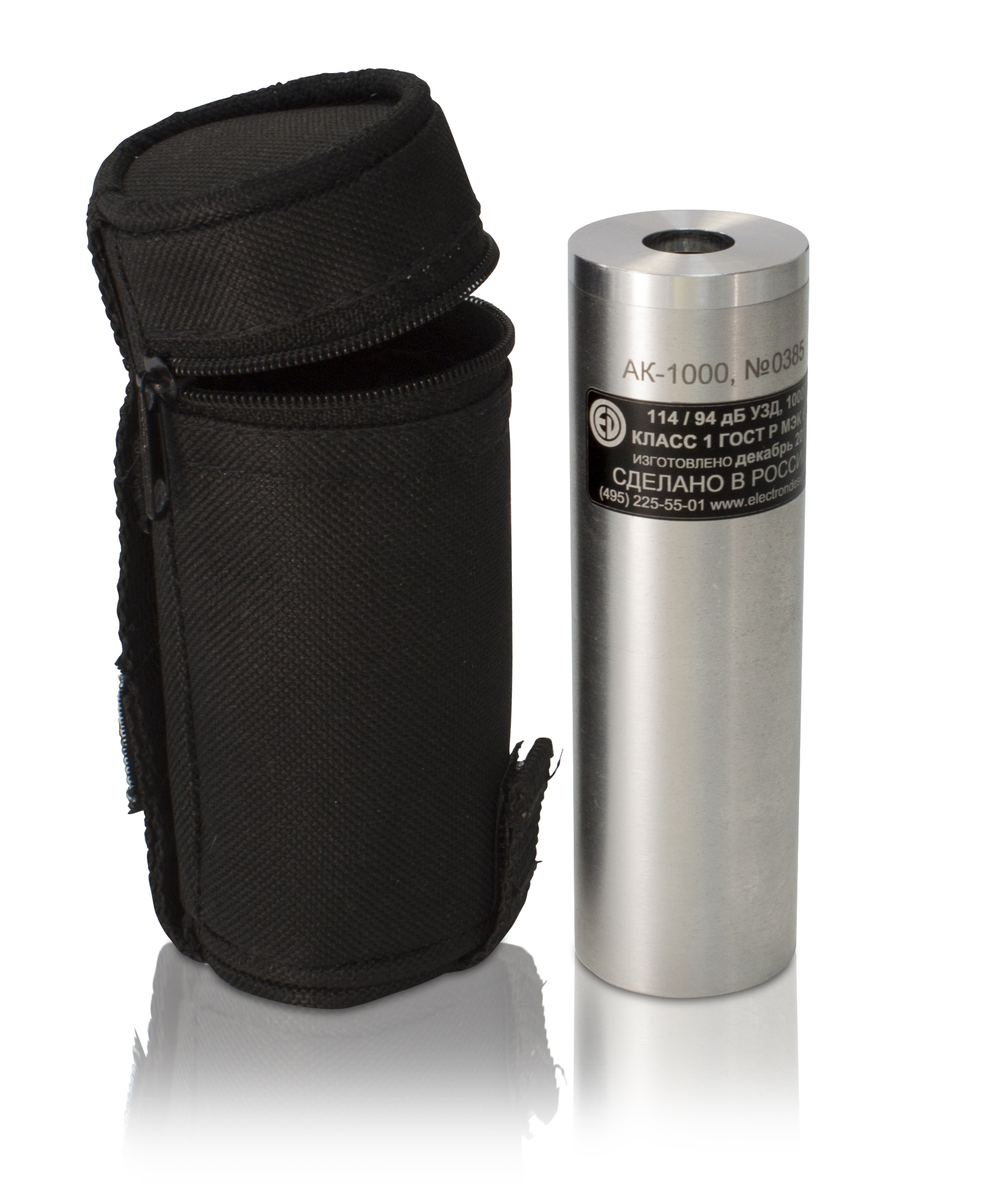
AK-1000 Acoustic calibrator
characteristics
The AK-1000 is recommended for use with OCTAVE-101A, OCTAVE-101AM, OCTAVE-110A, OCTAVE-110A-ECO, OCTAVE-121, OCTAPHONE-110, OCTAVE-201, ECOPHYSICS-110A sound meters. The AK-1000 can be used for calibration of acoustic measuring paths with VMK-205, MK-265, MR-201, M-201, MK-233 microphones, and other ½-inch microphones.
technical specifications
Reproducible ultrasound, dB (rel. 20 µPa): 94 and 114
The limits of the permissible basic error of the reproducible ultrasound, dB: ± 0.25
Limits of the permissible additional error of the ultrasound caused by a change
in ambient temperature in the operating temperature range, dB: ± 0.08
Frequency of the reproduced sound pressure, Hz: 1000
Limits of the permissible basic relative error of reproduction of the sound
pressure frequency, %: ± 0.7
Limits of the permissible additional relative error of the sound pressure frequency caused by a change in ambient temperature in the operating temperature range, %: ± 0.07
Coefficient of nonlinear distortion, %, not more than: 2.5
Weight (with batteries), kg, no more than: 0.250
Overall dimensions (length×diameter), mm, no more: 158×35
Operating conditions:
- ambient temperature, ° C: from minus 10 to 50
- relative humidity (at 40 ° C), %, not more than: 90
- atmospheric pressure, kPa: from 65 to 108
PKF TSIFROVYE PRIBORY
Moscow
Produced in: Moscow
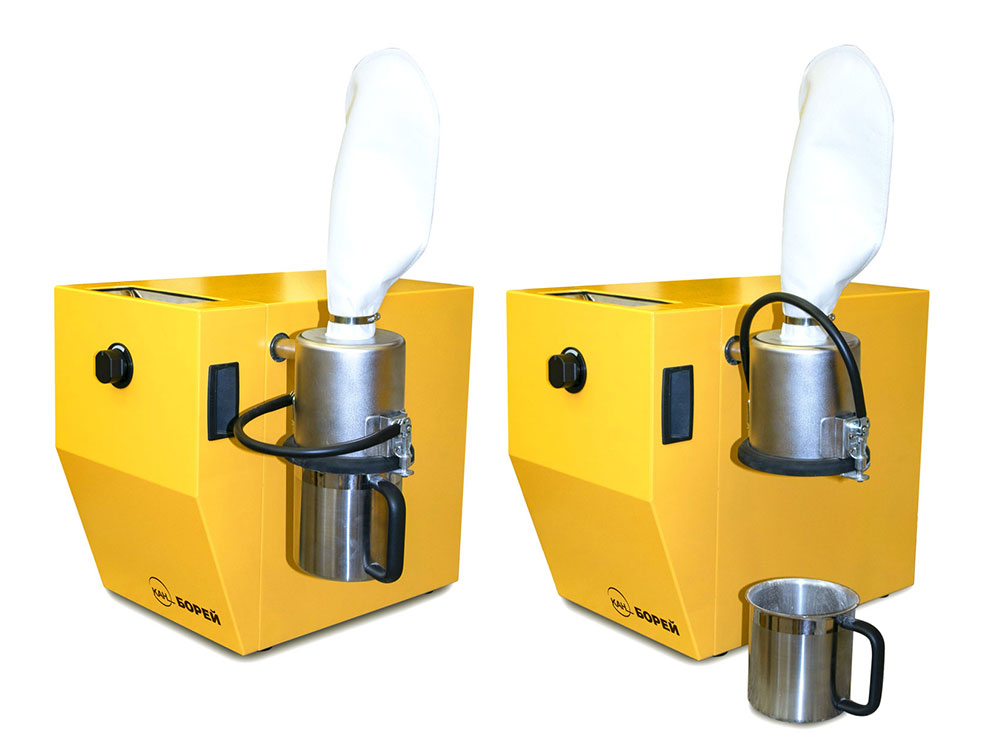
BOREY Laboratory Mill
1 supp.
The mill provides grinding of grain crops according to the current standards regulating methods of determining their quality.
The principle of operation: grain is fed into the mill dispenser, where an air-grain mixture is formed, which enters the grinding chamber. The crushed product is separated from the air in the cyclone and collected in a special removable container. After the grain supply is stopped, the air flow ensures self-cleaning of the dispenser and the grinding chamber of the mill.
application
It is used in the preparation of samples to determine the quantity and quality of gluten, the "drop number" and other indicators of the quality of crops by infrared spectroscopy and other laboratory analysis methods, which require a high degree of grinding of samples.
GENERAL CHARACTERISTICS
• High degree of grinding
The mill is equipped with a sieve with round holes with a diameter of 0.8 mm*, which makes it possible to obtain a finely dispersed product with a stable particle size during grinding.
*on a separate order, it is possible to complete a sieve with holes with a diameter of 1.0 mm
• Quick and easy cleaning
The ledges and holes in which the ground sample can be collected are minimized.
• Low noise
The optimized design of the mill body and the door of the grinding chamber with additional noise insulation ensure comfortable work of the staff during the working shift.
• Large volume of the container for the ground sample
The volume of the container for the ground sample is 1.4 liters. Thanks to this, it is possible to grind samples weighing up to 500 grams, which allows you to obtain more accurate test results and use the ground sample for simultaneous various analyses.
• Dust-free grinding
A fundamentally new design of the cyclone-container connection for the ground sample eliminates the possibility of dust entering the air.
• Easy to operate
The ergonomic handle of the retainer allows you to quickly and easily fix the container for the ground sample.
technical specifications:
Volume of the receiving funnel, 500 ml
Permissible amount of ground product per hour, kg 5
The grinding time of the suspension is 50 gr., from 25-35
The maximum size of the crushed product, mm 12
The diameter of the sieve holes, mm 0.8; 1.0
The speed of rotation of the grinding hammers, rpm 16,800
Minimum mass of the milled product, g 10
The maximum mass of the milled product, 500 g
Overall dimensions, mm 550 x 520 x 460
Weight, kg 50
Noise level, dB 70
Power supply Single-phase AC 220 V, 50 Hz
Power, W 1100
The response time of the overload protection system, from 20
GK EKAN
Saint Petersburg
Produced in: Saint Petersburg
